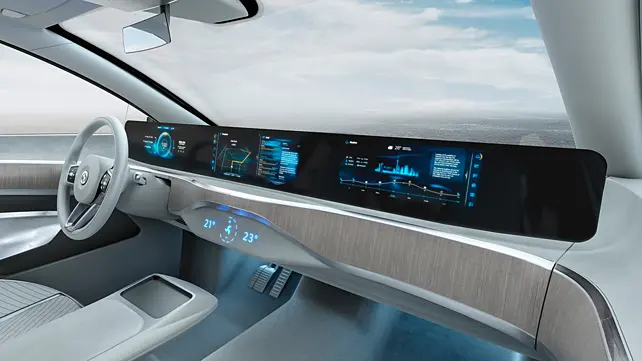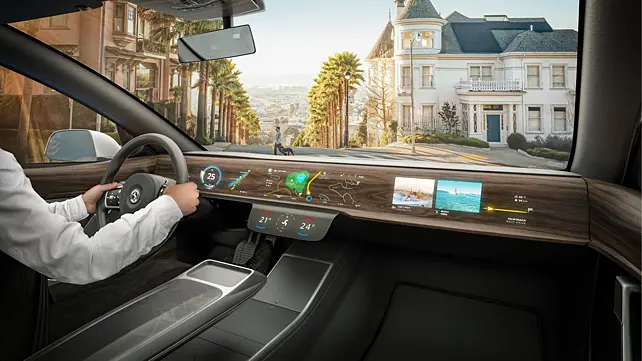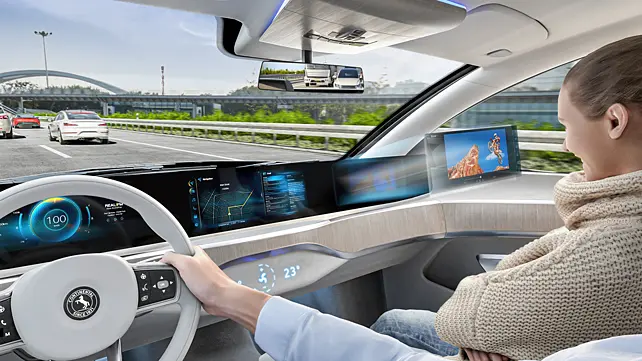
The penetration of connectivity in vehicles has proved to be paving the way for new experiences within the car. Earlier, vehicles were used just as a mode of commutation to move from point to point. Today, they are not just a mode of transportation but are ‘mobile living spaces’.
Most people in urban areas spend a considerable amount of time in their vehicles, for reasons such as traffic, commuting to work, stepping out on an adventure over the weekend to escape the routine, or perhaps for the sheer joy of driving. The present generation end consumers look for a lot more action in their vehicles to meet their expectations of safety, convenience, and comfort.
Automotive technology firms are focusing on providing consumers with a personalised driving experience by leveraging technologies that help in delivering the best human-vehicle interaction. By seamlessly connecting human and vehicle interactions, solutions such as digital assistants and modern displays meet the demands of future mobility.
Providing The User With A Distinct Experience
With more information and content, information processing in automobiles becomes more complex. User Experience (UX) not only creates the conditions for this but also provides the user with a distinct experience when interacting with various elements. It is also a clear differentiator and makes every person’s driving experience unique and personal.
The user experience has become the game-changer and this incorporation of technology raises usability to a new level. It provides premium features, extensive functionality, and an exceptional driver/ passenger experience, which is influencing the consumers more than ever.
With driver assistance and infotainment systems supplying more and more information, the car has now become a smart communication partner. As a result, it has become a priority of all the technology companies to ensure intuitive, easy, and safe interaction between the driver and car.
The digital assistant focuses on the most natural form of communication, which is speech. The system can communicate almost like a human. Through the smart voice assistant, the driver can seamlessly transition between various function menus. The digital assistant also can understand multiple questions and commands without the driver having to repeat the commands.
As we are moving towards autonomous and connected driving, the amount of information displayed on screens is also increasing rapidly. The traditional 2D display is no longer enough and the traditional 3D displays necessitate additional equipment, which degrades the in-vehicle experience for the driver and co-passengers.

Revolutionary Dashboard Innovation
Recently, Continental introduced the ShyTech displays which is a revolutionary dashboard innovation where the in-vehicle display is only visible, when necessary. The technology remains invisible when not in use. This not only reduces the amount of unnecessary information while driving but also improves concentration ensuring the safety of passengers. This is possible due to the semi-transparent surface. It ensures that the screen is visually and haptically integrated into the surrounding surface.
Even if the instrument panel appears to be one piece, navigation, and other communication information, as well as the touchscreen menu, are always accessible. Simultaneously, Continental’s innovation addresses the design requirement of not displaying inactive screens as blank black areas. The display surface appears as either a wooden panel or a leather-covered surface, depending on the configuration. It not only looks like the original material, but it also feels like it. Screens can be installed virtually anywhere in the interior because of ShyTech innovations.

Continental recently developed another innovative display called Switchable Privacy Display. The display allows vehicle information to be displayed dynamically, either privately or publicly. The new display technology allows front passengers to use multimedia content such as videos or the infotainment system without distracting the driver from the road. If necessary, and if the traffic situation allows, all vehicle passengers can be given access to this content via a switchover. Conventional displays, which have previously been designed primarily for passengers, do not allow for flexible switching to a private mode.
The latest Natural 3D Lightfield display is an evolutionary step in the designing of human-machine interaction in vehicles. This will help in bringing new levels of safety and comfort by creating an unprecedented 3D experience without the use of special eyewear or head-tracker cameras. This innovative technology allows information to be safely communicated to the driver in real-time, making the interaction between the driver and the vehicle more intuitive and comfortable. It also allows passengers to share the 3D experience with the driver.
The Cockpit High Performance Computer (HPC) serves as the foundation for 3D display. The main function of this technology is to reduce the number of individual control units to a few high-performance computers. All displays in the next generation of Cockpit HPC are integrated into a single unit. This will allow the driver to distribute content across multiple displays like by dragging navigation maps from the front passenger’s display onto their screen and arranging them exactly where they want.
In Conclusion
The evolution of user experience in vehicles began with the replacement of buttons with dashboard screens. Further to that, voice commands were introduced which helped the vehicles to converse with their drivers. The human-machine interface, on the other hand, extends beyond the screens.
As the industry is still transforming, the manufacturers will be focusing on communication between the owner, the passengers, and the vehicle. Automotive technology companies have begun to work on this aspect, developing solutions for a comfortable journey for everyone in the car, not just the driver.
About the Author: Shrawani Rai is the Head of R&D, User Experience at Continental Automotive India.